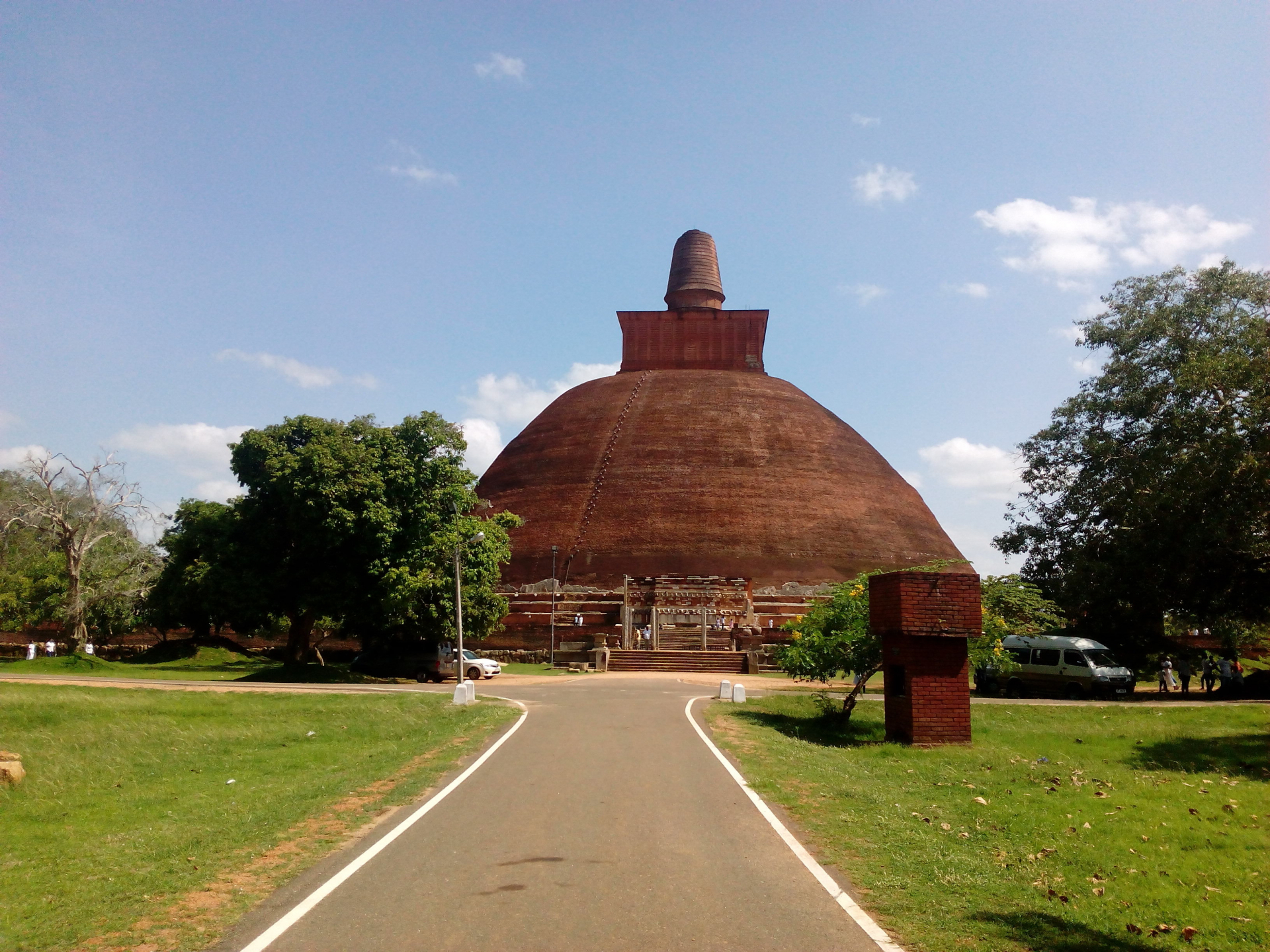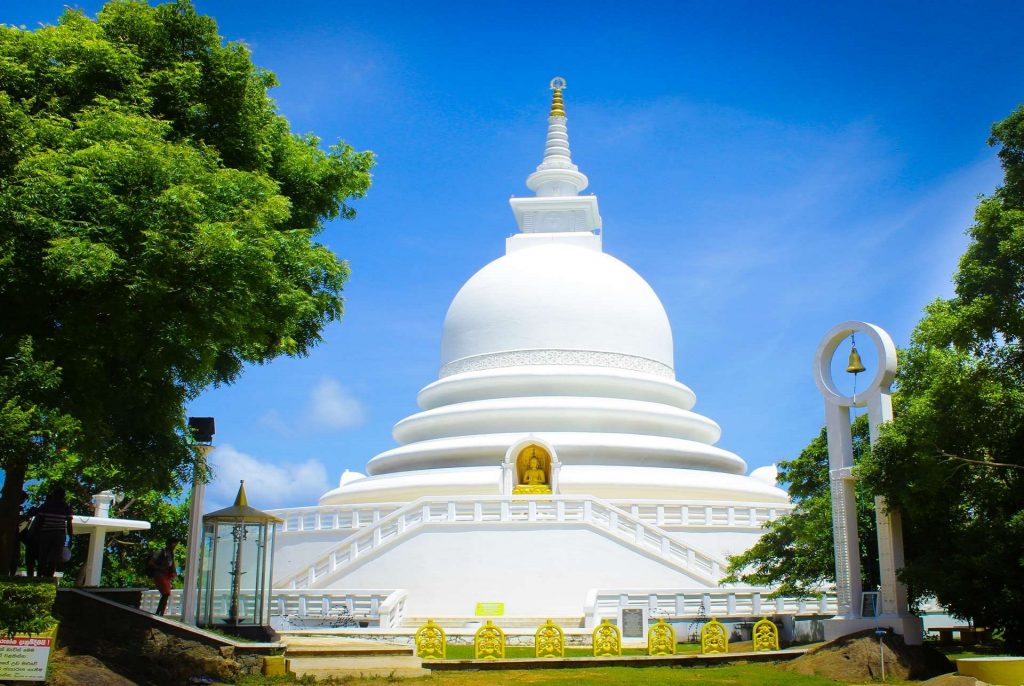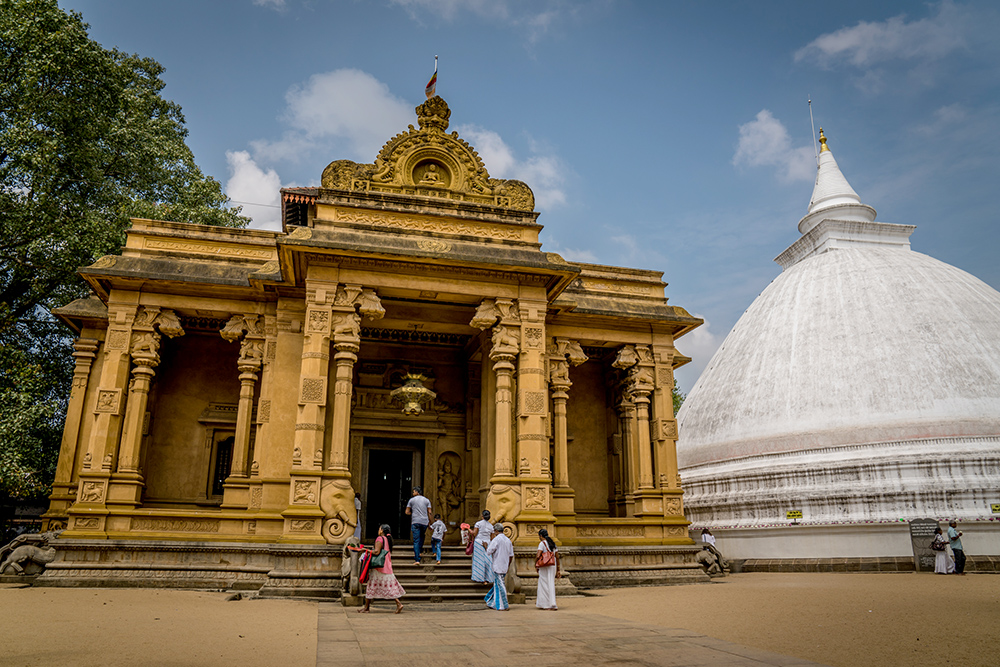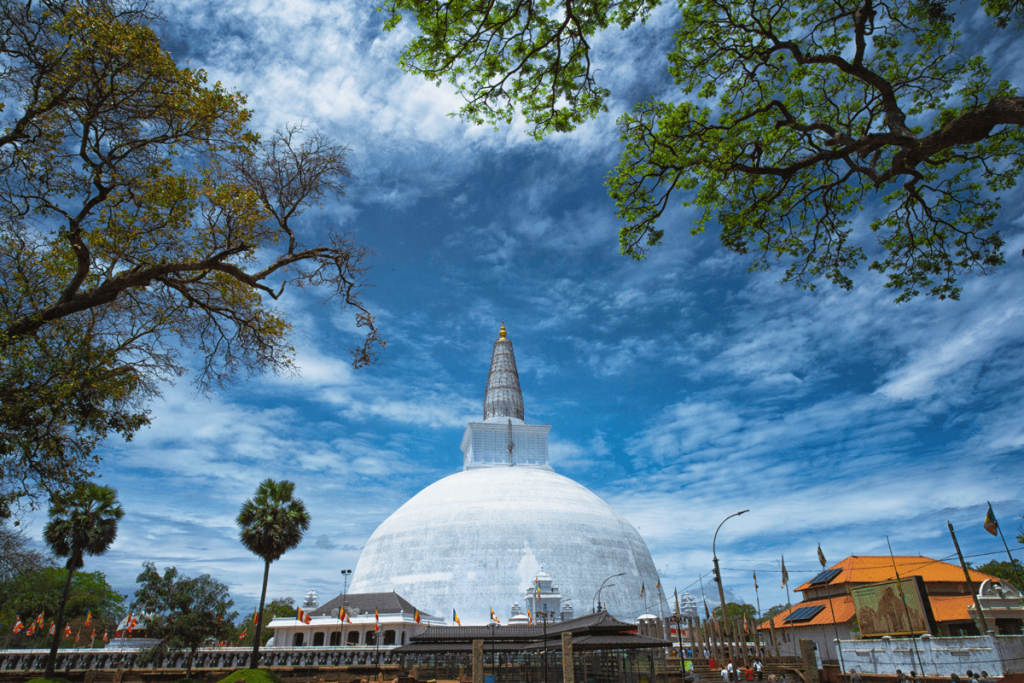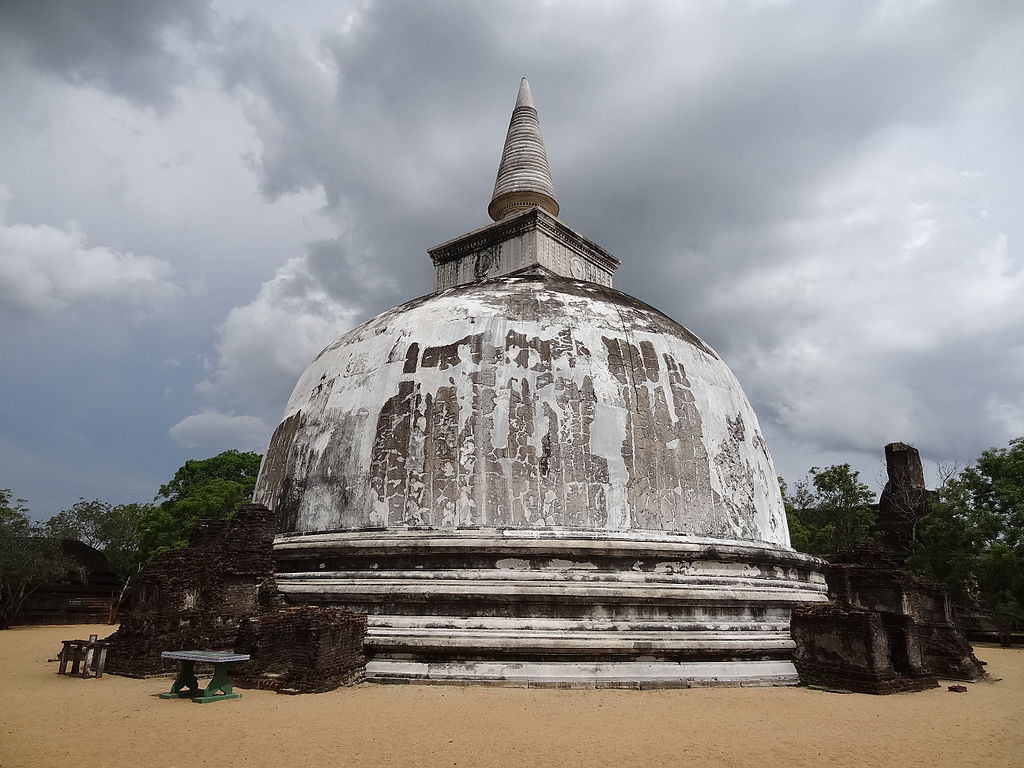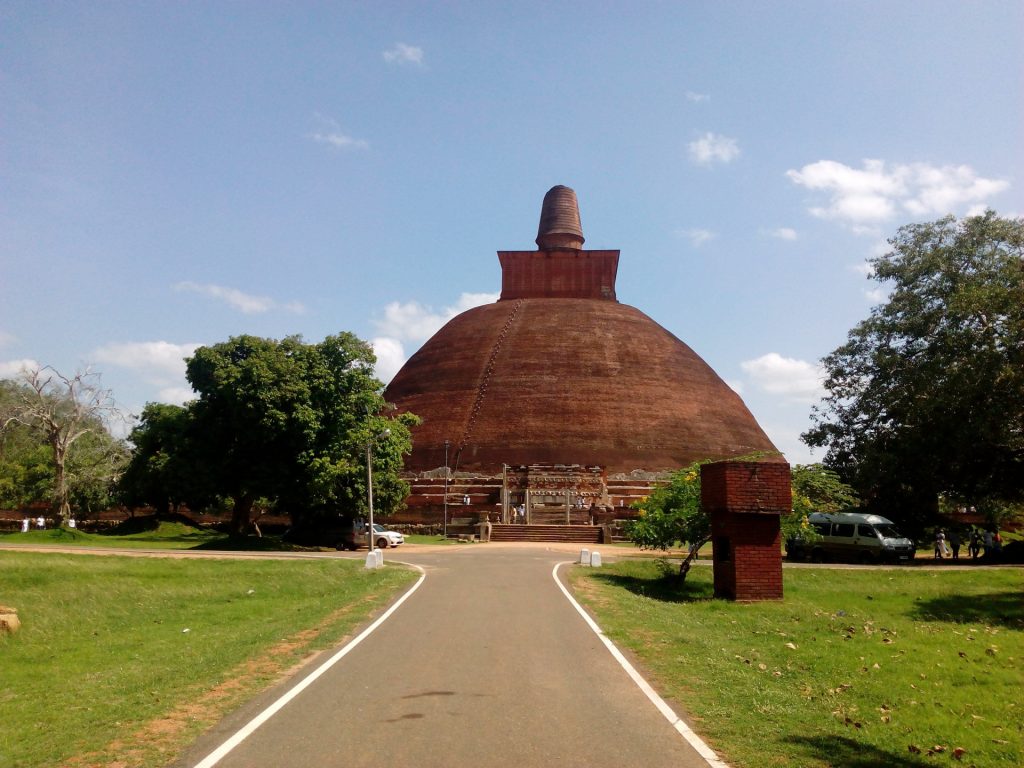Pagoda vs Stupa
Pagodas – tiered towers with multiple eaves – are often visible in many Asian countries such as China, Japan, Korea, Myanmar, Vietnam and other Buddhist countries. Pagodas are often built for a religious purpose in Buddhism or Taoism, and are usually located near a temple (Vihara). This iconic structure symbolizes the path to heightened awareness and perception, and is filled with wisdom, peace and harmony.
While in East Asian countries, Pagodas are the symbolic icon, Sri Lanka recognizes a similar structure with the term “Stupa” – a large, white colored dome. Stupas take the most important spot in a Sri Lankan temple and are considered the first point of worship as they are constructed by enshrining the relics of Lord Buddha.
Sri Lanka is also one of the major stupa-world-record holders – home to the world’s four largest ancient stupas. In fact, Stupas in Sri Lanka are much older than the rest of Southeast Asia, and have the original dome shape.
Components of a Stupa
Each of the stupa domes in Sri Lanka take up one of the following shapes:
- Bubble shaped (Bubbulaakara): The Ruwanwelisaya in Anuradhapura, the Rankothvihara and Kiri Vihara in Polonnaruwa are examples of the Bubble shaped stupas.
- Paddy heap (Dhaanyaakara): Kelaniya Rajamaha Viharaya – one of the oldest temples in Sri Lanka, the Jethawanarama and the Abhayagiri Stupas of Anuradhapura take on the shape of a paddy heap.
- Bell shaped (Ghantaakara): Most stupas in the country are bell shaped. Thuparama stupa in Anuradhapura was the first one built after Buddhism came into Sri Lanka and is in the shape of a bell.
- Pot shaped (Ghataakara): Tissamaharama Temple is pot-shapes and is very similar to the bubble shaped structure, only this one takes a proper hemisphere shape.
- Lotus shaped (Padmaakara): Very few stupas are lotus shaped with large basal rings: Indikatuseya in Mihintale, and the Vijayarama in Anuradhapura.
Now that you have an understanding of the Pagodas/Stupas in Sri Lanka, let’s move on to some of the most stunning Pagodas that you must visit when in Sri Lanka.
1. Rumassala: Japanese Peace Pagoda – Unawatuna
The purpose of this Peace Pagoda is to provide focus and create unity for people of all races and creeds, in their quest for world peace. Built under the guidance of Fuji (1885-1985), a Buddhist monk from Japan who was inspired by Gandhi and wanted to devote his life in promotion of non-violence. As you go around the staircase that leads to the Stupa, there are four Buddha Statues that indicate the birth of Prince Siddhartha, His Enlightenment, and the attainment of Parinibbana. From the Pagoda, one can enjoy magnificent views of the Indian Ocean. Located a few kms away from the popular city of Galle, this attraction is easily accessible during your stay in the southern coast of Sri Lanka.
Rumassala, also known as Buona Vista is featured in the Ramayana as Queen Sita’s home. It is also believed that Hanuman dropped a piece of Himalaya here, and many medicinal plants still grow. A little further from the Peace Pagoda is a temple – Sri Vivekaramaya, consisting of some interesting structures including Hanuma carrying a piece of the Himalaya Mountain in its hand.
2. Kelaniya Temple
Eight years after attaining Enlightenment, Lord Buddha visited Kelaniya Kingdom upon the invitation of the then King of the Cobra Tribe, in an effort to settle a battle between the two Naga (Cobra) Kings. Chronicles state that 500 bhikkhus followed Buddha during this visit and preached the religion on the spot of the Kelaniya Temple, to the King and his people.
Located about 6kms from Colombo, the Stupa is approximately 90 feet in height and is easily accessible along the Colombo-Kandy Route. History says that the Kelaniya Temple is older than the cities of Anuradhapura and Polonnaruwa. This ancient Stupa enshrined a gem-studded throne on which Buddha preached sermons.
In 1769AD, the Temple was reconstructed by King Keerthi Sri Rajasinghe. A visit to the Temple will show you paintings of the Kandyan period depicting Jathaka stories. A large, gold-plated reclining image of Buddha can be seen in the image house, where a gem-studded seat is also enshrined.
3. Ruwanweliseya – Anuradhapura
This magnificent structure cannot be escaped from sight when one pays a visit to the ancient town of Anuradhapura. Standing at a height of 103 meters, and a massive diameter of 51 meters, the Ruwanweliseya is one of the tallest stupas and most calming places in Sri Lanka. Built in 140BC by King Dutugemunu, at the time it was the largest stupa, but remained so only for a few years.
What is astounding though is that the Ruwanweliseya exists and is well preserved till present day – which means the structure was made using high quality raw materials. In the 19th century, the ruins were depleting but it was renovated and brought back to beauty in the 20th century. Housing precious relics of Gautama Buddha, this Pagoda is a popular tourist attraction. Visitors are greeted with a statue of King Dutugemunu at the eastern entrance of Ruwanwelisaya.
An interesting fact some say is that the structure of the stupa was inspired by the view of a bubble floating on water. The structure depicts the teachings of Buddha in the following ways:
- Dome shows the vastness of the doctrine
- The square on the dome represents four noble truths
- Eight concentric rings are the Noble Eightfold Path
- The large crystal – enlightenment
4. Kiri Vihara – Polonnaruwa
Originally known as Rupavati Chetiya, the current name Kiri Vihara means ‘milk white’. When the overgrown jungle in Polonnaruwa was cleared after 700 years of neglect, the 80 foot tall Stupa with original white lime plastering was seen in perfect condition, and is still the best-preserved, unrestored Stupa in Polonnaruwa.
Constructed in the 11th century AD, the Stupa is now a well-known training center for monks as well as a hospital with the latest surgical instruments. There are several other small stupas built around the Kiri Vihara and are considered burial chambers for honored men and priests. The design is very straightforward, yet essential – making it an architectural marvel as it withstood several natural disasters and thefts.
5. Abhayagiri Viharaya
Being a major monastery site in Buddhism, Abhayagiri Viharaya is one of the most extensive ruins in the world, located in a very sacred Buddhist pilgrimage city in Sri Lanka. Abhayagiri is one of seventeen other religious units in Anuradhapura, and the largest of the other five Temples in the city. The ancient stupa is surrounded with a seat of the Northern Monastery (Uttara Vihara), and the original custodian of Buddha’s Tooth Relic in Sri Lanka.
Established by King Valagamba (during 89-77 BCE), this complex of monastic buildings is a fraternity for Budhhist monks, and attracts philosophers from all over the world.

